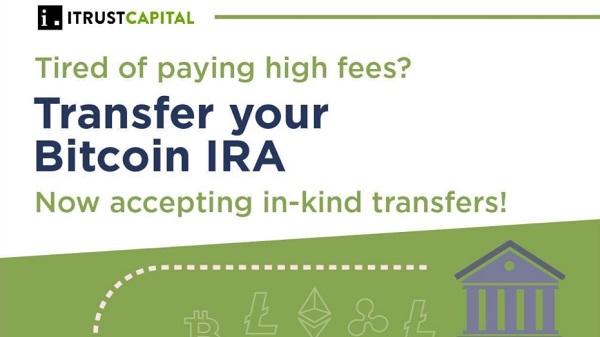
Blockchain network congestion, explained
Blockchain network congestion refers to a situation where the number of transactions exceeds the network’s capacity, resulting in processing delays.
When there are more pending transactions than the network can handle, blockchain networks get congested. Limited block sizes and the length of time required to construct a new block are the causes of this issue.
Transactions are delayed, and users notice slower processing times when the volume of transactions exceeds the network’s capacity to confirm them quickly. The release of BRC-20 tokens on the Bitcoin blockchain led to a rapid increase in transactions, resulting in Bitcoin network congestion.
Increased usage, high transaction volumes and events like initial coin offerings (ICOs) can strain the system and cause congestion. Users may choose to pay extra fees to have their transactions prioritized, which raises expenses even more during these busy periods. Moreover, transactions become more expensive and less efficient as a result of the congestion, which also affects the overall user experience.
However, blockchain networks are always working on ways to improve scalability, ensure smoother transactions, and reduce congestion-related problems, such as protocol updates and layer-2 scaling solutions. These initiatives are essential for widespread adoption because they increase the robustness and effectiveness of blockchain networks, even in times of heavy demand.
The importance of efficient blockchain transaction processing
Efficient blockchain transaction processing is vital for enabling high throughput, low latency, reduced transaction fees and enhanced data security across various industries.
The widespread use and integration of blockchain technology into various industries depend on effective blockchain transaction processing. Scalability is one of its main advantages; it enables blockchain networks to manage a large volume of transactions quickly and concurrently.
Scalability has been a problem in conventional systems, but effective blockchain processing eliminates this problem, providing smooth operations even during periods of high usage. Additionally, by lowering latency and congestion, it improves network performance and enables real-time transaction validation and confirmation. Transaction fees are also reduced by efficient transaction processing, making blockchain technology more affordable for both private individuals and commercial enterprises.
Furthermore, effective blockchain processing ensures swift, safe and tamper-proof transactions in industries where data security is crucial, such as finance, healthcare and supply chain management. The speed at which blockchain can handle transactions will be a deciding factor in how quickly new technologies are developed and adopted.
Causes of blockchain network congestion
Blockchain network congestion arises from factors such as high transaction volumes, increased adoption, DApps, ICOs and malicious activities, causing delays and higher fees in transaction processing.
The processing capacity of the blockchain network is strained by a number of issues, which cause delays and higher transaction fees. For instance, a large number of transactions that exceed the network’s capacity can overwhelm the processing power, delaying confirmation of transactions.
Moreover, as blockchain technologies are more widely used, more individuals and companies make transactions, which increases network traffic. Decentralized applications (DApps), platforms for decentralized finance (DeFi) and the concurrent execution of smart contracts all place a considerable burden on the network’s resources and cause congestion.
In addition, as investors participate in events like ICOs and token sales, the network is further clogged with transactions. Last but not least, malevolent actors can cause system disruption by sending a large number of low-value transactions, and physical restrictions in the network architecture, like poor internet connections, can obstruct the smooth flow of data and cause congestion problems.
Consequences of network congestion
In blockchain systems, network congestion can have serious repercussions for users, businesses and the general operation of decentralized applications.
One immediate consequence is delayed transaction confirmations. Services that depend on timely payments or transactions are affected when a network is crowded because transactions take longer to process. For instance, Ethereum’s network was severely congested during the CryptoKitties boom in late 2017, which led to delays in platform transactions.
Higher transaction fees are also a result of significant demand for transaction processing. Users frequently bid higher fees to speed up their transactions when there is congestion or a transaction backlog. Transactions may become more expensive as a result of the increase in fees, especially for smaller transactions. Due to the high demand for DeFi apps, the Ethereum network experienced congestion in 2021, which caused transaction costs to soar.
Additionally, the user experience of DApps is impacted by network congestion due to slow transaction processing. Prolonged congestion and a bad user experience may make users reluctant to interact with the DApp. Users who are frustrated or dissatisfied might abandon the platform completely, which would have an impact on the success of the DApp and its user base.
Also, developers may need to set aside more resources to boost the DApp’s performance when it is congested. This diversion of resources may have been used to improve user functionality or experience instead, delaying the development of the DApp as a whole.
Strategies to address blockchain network congestion
Blockchain network congestion needs to be addressed with a diverse strategy that includes both short-term fixes and long-term scaling solutions.
Optimizing transaction fees is one such strategy. To prevent unnecessary bidding wars during congestion, users can set reasonable costs. Also, layer-2 solutions, like rollups for Ethereum and the Lightning Network for Bitcoin, can be implemented by developers to reduce the load on the primary blockchain by allowing some transactions to take place off-chain.
Furthermore, by increasing the number of transactions executed in each block and enhancing block propagation methods, throughput can be increased. Additionally, switching to proof-of-stake or other efficient consensus algorithms lowers the computational load, allowing blockchain networks to support more transactions.
As a crucial tactic to deal with blockchain network congestion, sharding, as implemented by the Ethereum blockchain, stands out. Each of the shards created by dividing the blockchain into smaller parts can operate independently to process transactions. The capacity of the network is greatly increased by this parallel processing, enabling numerous transactions to take place simultaneously.
Finally, encouraging DApp developers to improve their smart contracts and code can lessen the needless load on the network. Blockchain platforms can reduce traffic by combining various techniques, resulting in smooth transaction processing and improving the user experience.




Be the first to comment